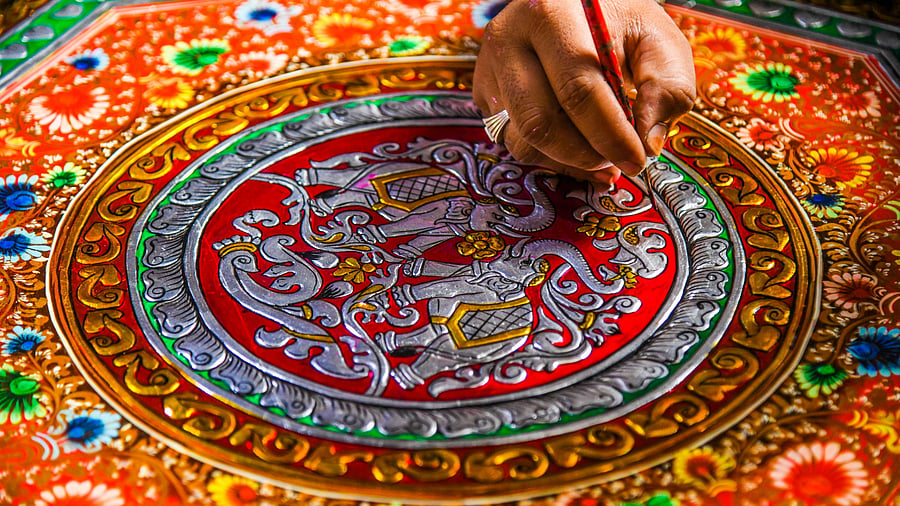
The demand for Kinnal artefacts has surged after the reduction of GST on handicrafts from 12% to 5%.
Credit: Bharat Kandkur
Hubballi: Over the last two months, around 60 artisan families in Kinnal village in Koppal district have been flooded with orders from corporate houses and international clients. The demand for the iconic Kinnal artefacts surged after the reduction of the Goods and Services Tax (GST) on handicrafts from 12 per cent to 5 per cent.
In fact, demand for the craft is growing steadily over the past two years.
Despite booming demand, artisans are struggling to keep up due to shortage of raw materials, especially the Polki tree wood, essential for the craft. The tree species, once abundant in the region, has now become scarce.
“There is a great demand for Kinnal artefacts now. In the last two years, I have received multiple orders from corporate companies and foreign delegates. Since Dasara and Deepavali, I have received orders worth Rs 45 lakh for around 1,400 pieces. But raw materials are hard to find,” says Santosh Chitragar, an artist credited with modernising the craft and taking it global.
He explains that alternatives to Polki tree such as teak are expensive and not suitable.
“A six feet tall Polki tree was available for Rs 4,000 earlier and we could make six to eight artefacts from it. Now we are forced to use teak, which costs around Rs 4,000 per sq foot. Also, as teak is hard and heavy, making it difficult for artisans to carve,” he adds.
Tree cultivation efforts
The forest department officials say that earlier attempts to revive Polki tree cultivation in nurseries received limited success.
“We collected seeds from the wild, but the seedlings did not grow well in nurseries. The trees regenerate faster through dispersal of branches or stems,” said a senior forest official.
Koppal Deputy Commissioner Suresh Itnal, says he has asked the forest department to promote natural regeneration of the trees in their native habitat near Anjanadri Hills.
“The forest department will soon take up cultivating nearly 5,000 Polki trees in their natural habitat. The plant is a fast-growing species and in the next six months, the artisans should get their first harvest. Within a year, we expect full-scale availability of raw materials,” he said.
Thanks to a combination of innovation and market revival, Kinnal craft has seen renewed interest over the last few years, with over 250 artisans trained to create contemporary designs. Yet, until Polki tree returns in abundance, the very wood that shapes this ancient craft threatens to become its biggest constraint.
The demand for Kinnal artefacts has surged after the reduction of GST on handicrafts from 12% to 5%.
Credit: Bharat Kandkur